Cody C. Engdahl's Blog, page 4
March 16, 2025
After Action Report: Military and Munitions Day at the White House Inn Museum
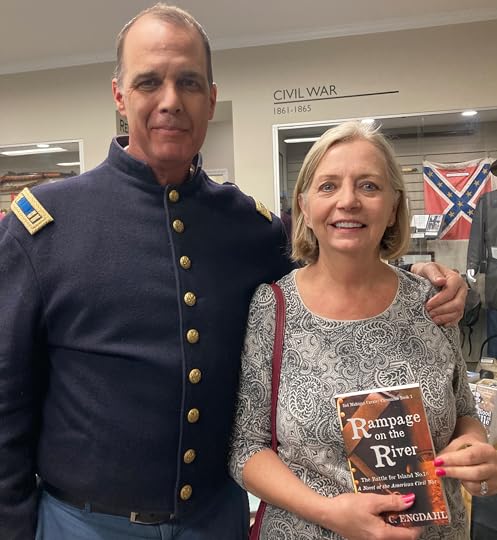
The White Inn Museum invited me to sign books at their Military & Munitions event last Saturday. I was there at 7:30 in the morning to set up my table. Here’s what it looked like.
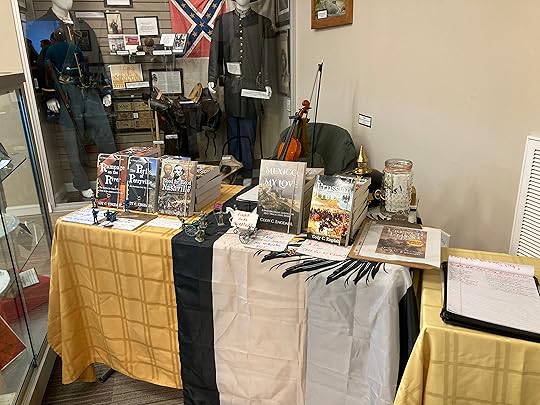
We opened up at 9 am. My first customer was none other than Nick Pride, a Facebook friend for years, who had come out to see me at the event. He bought the whole 5-book series! Thanks, Nick!
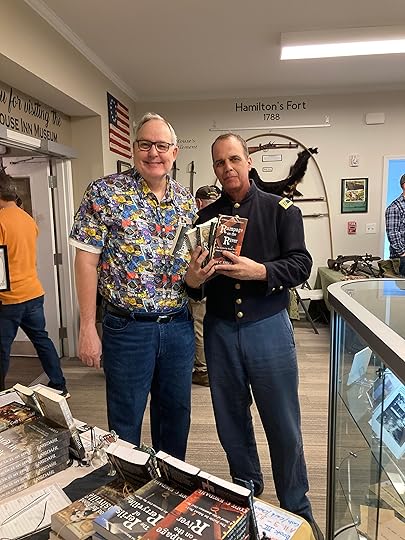
We had a steady stream all day. I sold fourteen books in all and got three new signups for this email list. So if you’re one of them, thank you! Here are the other pictures:
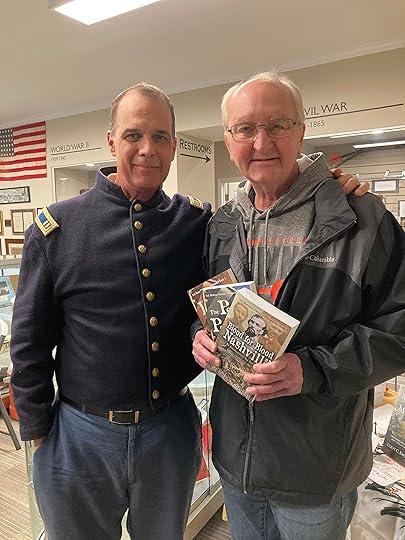
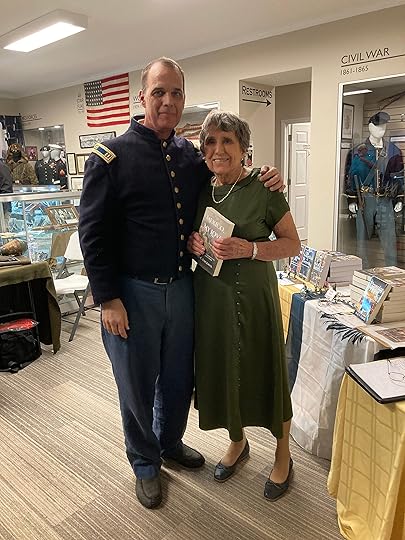
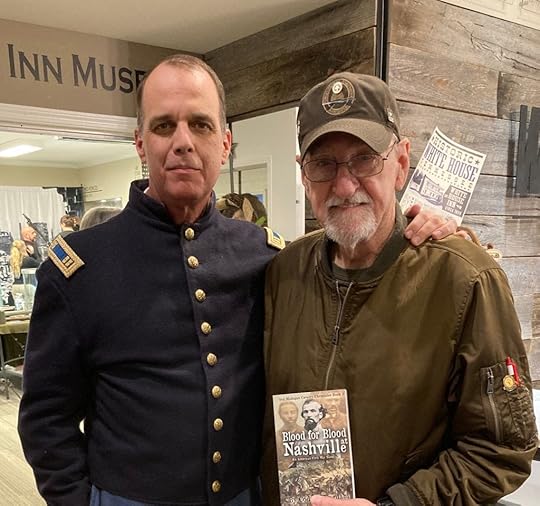
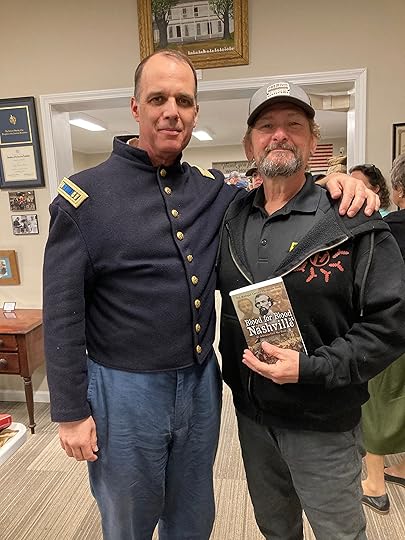
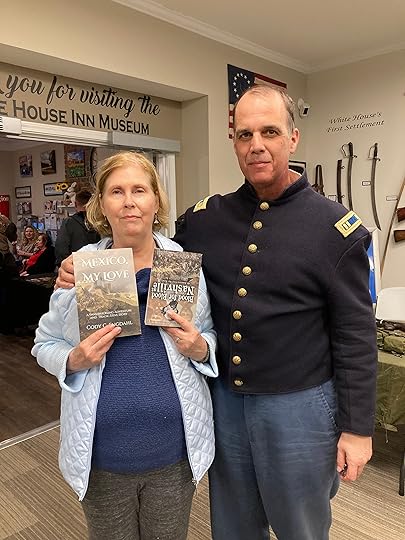
Coming April 16!The French FiascoThe Kindle version will be $4.99, or your country’s equivalent, but you can get it for just 99¢, or the equivalent if you pre-order it now!
Paperback, hardcover, and audible prices have not yet been set.Pre-order for only 99¢ or the equivalent.
March 10, 2025
💣After Action Report: 2025 Mid-South Civil War & Military History Show
Great time in Southaven, MS.
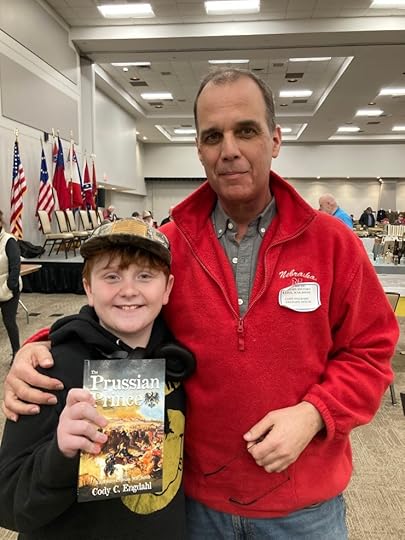
Mission Accomplished
Honestly, I thought twice about coming to the 2025 Mid-South Civil War & Military History Show.
As some of you know, I’m going through treatment for tongue cancer, and it’s putting me through the wringer. But there was no way I was going to miss this opportunity to hang out with my fellow American Civil War buffs, see old friends, and meet some new ones.
My mom came to take care of me and help run my table. Together, we sold some books and met some new readers. If you’re one of them, thanks for joining my email list.
Here are some pictures of my new friends and readers. Once again, I thank you for jumping into my series. I hope you’ll stick with me as I’m expected to survive and write a lot more books.
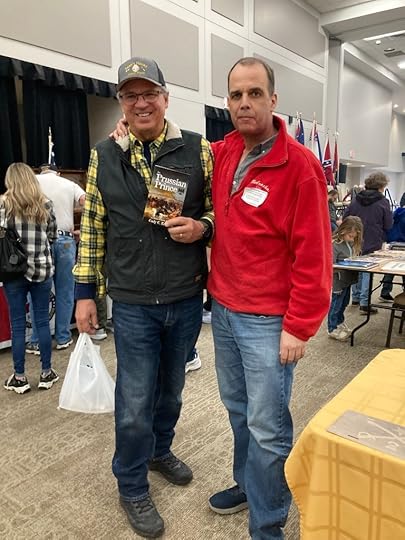
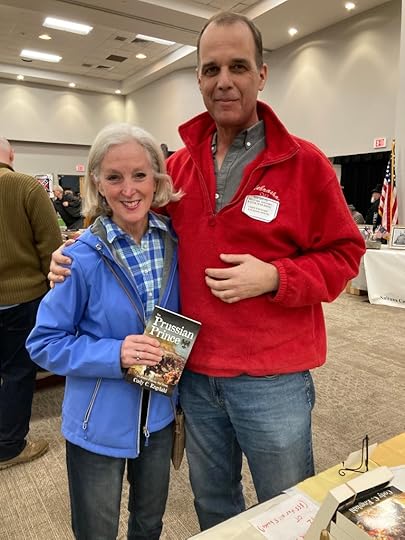
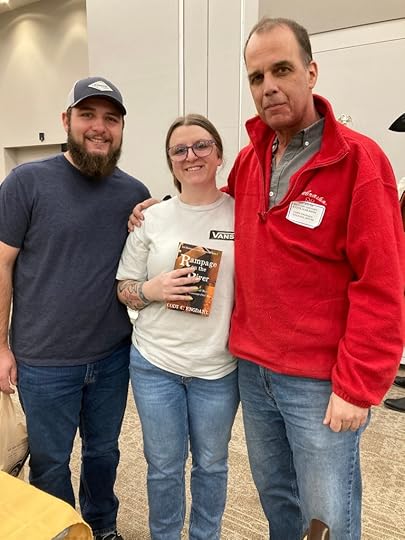
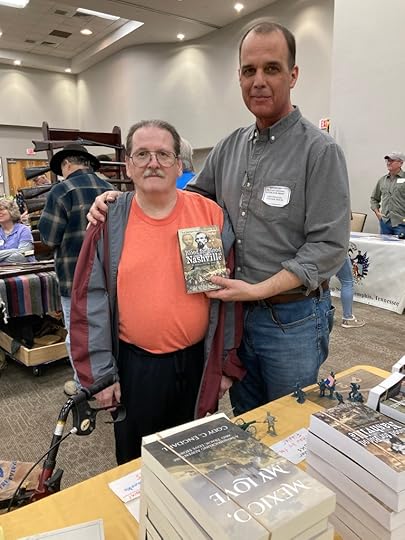
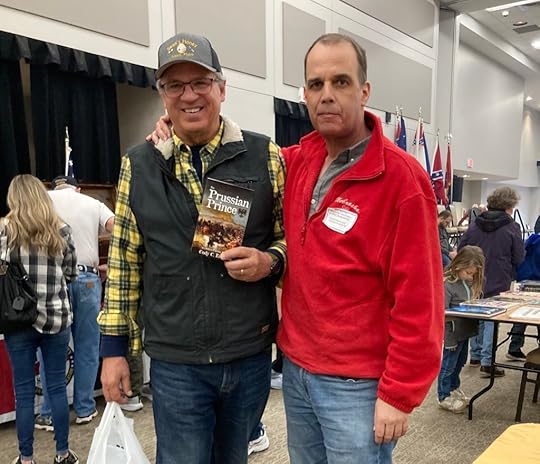
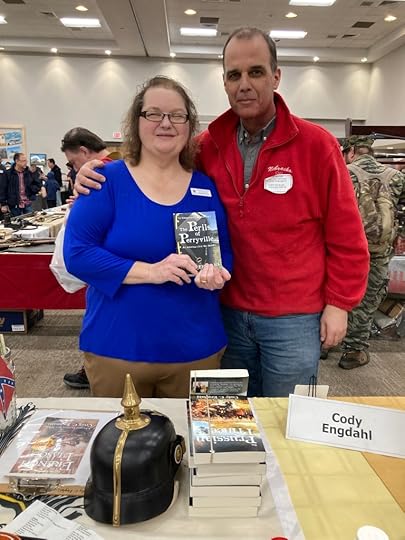
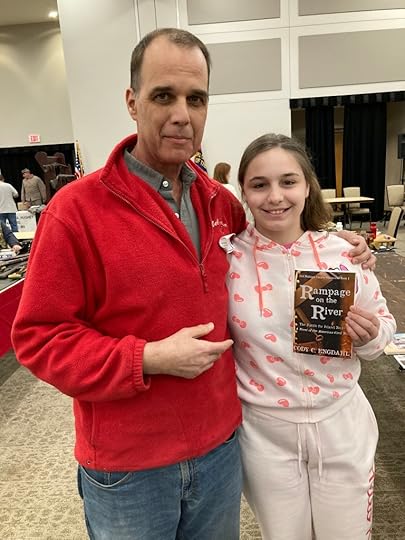
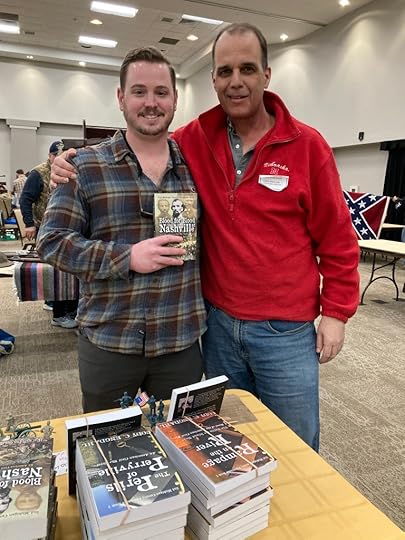
Coming Soon!
The French Fiasco will be out on Amazon, April 16!
The Kindle version will be $4.99, or the equivalent in your country. But you can pre-order it now for just 99¢, or the equivalent. Click the button below to check it out!
March 1, 2025
Come See Me March 7 & 8 at the Mid-South Military History & Civil War Show
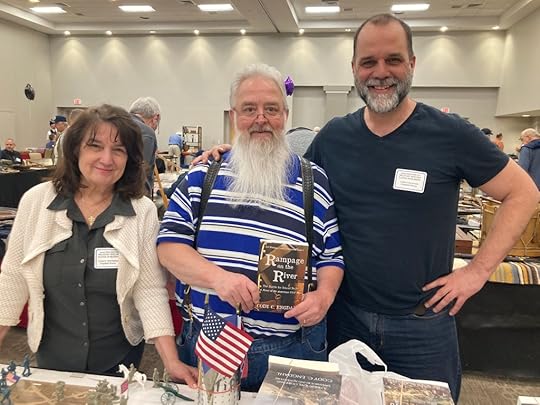
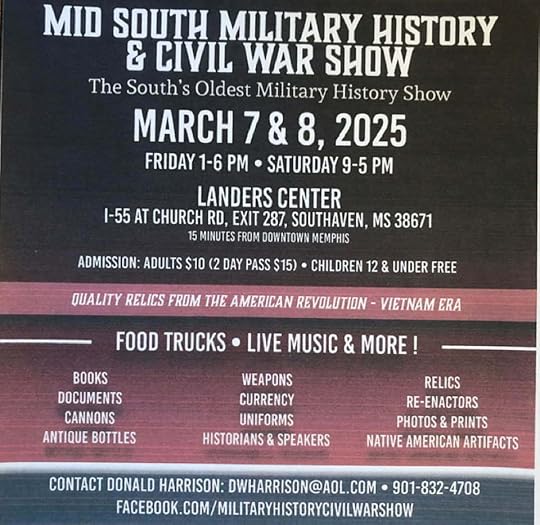
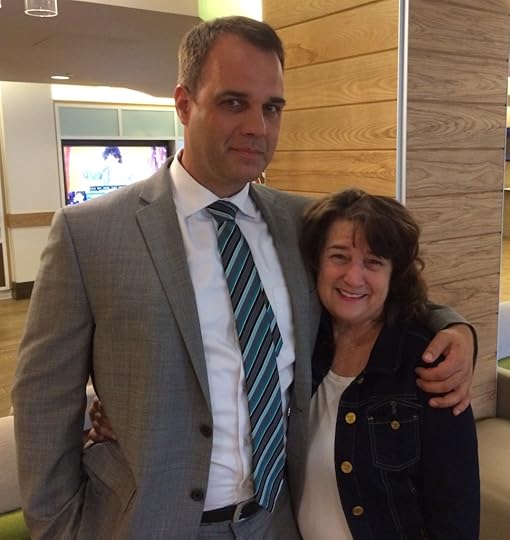
If you follow me on Facebook, you’ve probably heard I’m going through treatment for tongue cancer.
But I ain’t dead yet!
Come see me and my mom at the Mid-South Military History & Civil War Show next weekend, March 7 & 8. I’ll be playing fiddle and signing books!
MID SOUTH MILITARY HISTORY & CIVIL WAR SHOW is the South’s Oldest Military History Show. It’s MARCH 7 & 8, 2025. Hours are FRIDAY 1-6 PM • SATURDAY 9-5 PM at the LANDERS CENTER, 4560 Venture Drive, Southaven, MS 38671Directions: 1-55 AT CHURCH RD, EXIT 287, SOUTHAVEN, MS 38671, 15 MINUTES FROM DOWNTOWN MEMPHIS.ADMISSION: ADULTS $10 (2 DAY PASS $15) • CHILDREN 12 & UNDER FREEI hope to see you there!
Check out my last book on pre-order, coming April 16!
And, catch up on my last release here:
February 27, 2025
Review of A Man Dies But Once by Matthew Harffy
Mathew Harffy has mastered the voice of the Old West.
I’m not typically a fan of first-person narratives, but the voice of old Jed White recounting his first love and first kill was so vividly authentic, I could not tear myself away.
A Man Dies But Once is a 20,000-word novella told from the perspective of Jedediah White, a grizzled old gunslinger who speaks it like a confession after a life of killing and perhaps regret.
The story is a juxtaposition of his first sexual encounter with his first murder, seemingly two rites of passage in the Old West. The two create a dichotomy of love and hate, life-giving and life-taking rituals, as if the two are opposite sides of the same coin.
It’s also an interesting contrast to hear the old, trail-hardened veteran retell a story from his younger, naive days. In it are all the seeds of the man Jedediah White becomes.
Jeb White is a supporting character in Harffy’s full novel, Dark Frontier. You don’t need to read it first, but I bet you’ll want to when you’re done with A Man Dies But Once.
Pre-order Harffy’s newest book here:
Check out the Harffy’s full novel here:
Pre-order my newest book here:
Check out my last release available now:
February 25, 2025
Kane takes you on the march to Moscow with Napoleon and his armies.
This is a first-person narrative from the vantage of Matthew Carrey, a degenerate gambler front Kent whose debts drive him into an ill-advised endeavor that leaves him stranded in France – penniless and labeled a traitor and murderer by the British Crown.
But Carrey is half French and uses his nearly native French tongue and Familial relations to start a new life in Paris. But his old ways pull him back into the gambling salons, and he is soon in trouble again. Blackmailed into service, the only way to save himself, clear his name, and spare his innocent uncle whom he dragged into this mess is to agree to spy for Britain as one of Napoleon’s messengers.
I really enjoyed the first act. Ben Kane did a fabulous job of selling how the rogue goes from being stranded in France to marching in Russia with Napoleon and his Grande Armée, all while in the service of the British Crown. It’s a great set up, and I was in for the ride.
I enjoyed the character. Matthew is not some “Biggus Dickus” who is stronger, taller, smarter, and a better fighter than everyone else. Matthew is a scoundrel who would pawn his uncle’s tailor shop just to win his money back in a gambling den. Matthew is always weighing the odds like a gambler in his decisions and has a little devil speaking in his head, goading him into making the wrong ones.
The rest of the book tells the story of Napoleon’s march to Moscow with battles such as Borodino, and then the retreat through the Russian winter in which hundreds of thousands died. This is told through Matthew’s eyes as he witnesses and participates in a series of events. He has an ongoing feud with a French hussar, which results in multiple duels. There’salso a love interest he feels compelled to save, raising the stakes and drama for our gambling man.
The book ends rather abruptly after the last in a series of ordeals Matthew must face to survive the brutal march home. It makes me almost wonder if there’ll be a sequel, although the Battle of Berezina – Matthew’s last challenge – is the last major battle of the campaign.
Whether Napoleon’s Spy is Book One of a series or a standalone novel, it’s an entertaining adventure with a likable protagonist that puts you in the action of Napoleon’s disastrous campaign in Russia.
Check out Ben’s book here:
Coming April 16: My latest novel! The pre-order is only 99¢ or the same equivalent in your country. It will be $4.99 when it comes out. Check it out here:
In the meantime, check out my last novel here:
February 4, 2025
Book Review: Charge to Battle, by Nick Ryan
This was exactly what I was looking for.
I’m normally a historical fiction reader and I write 19th-century military novels. I decided to reward myself after finishing a Franco-Prussian War book by reading something contemporary.
I’ve recently become fascinated with modern mechanized warfare, especially how it compares and contrasts with the mounted warriors of the 1800s I write about. I was particularly interested in Stryker and Bradley armored personnel carriers. I found this book after some searching, and boy was I happy I did!
Charge to Battle is an absolute action-packed romp through the opening scenes of a speculative World War III. Nick Ryan certainly knows his stuff and if you read the acknowledgments at the end, you’ll see he had a lot of help from those on the inside.
The setup feels quite familiar although this book was written before the Russo-Ukrainian War. In Charge to Battle, the Russians have begun the reconquest of their lost empire. They quickly roll through the Baltic States and are now driving toward Warsaw to take back Poland.
NATO has been caught with their pants down. They scramble to meet the challenge, rallying their thinly spread troops to protect the Polish capital. A small force of American Strikers and Polish militia sally forward to harry the Russian advance in a desperate attempt to buy the allies time.
It all comes down to a bridge that the Stryker force must cross without air support, as all air assets are concentrated at Warsaw. The Russians are dug in deep and ready to contest every inch of the crossing.
Sergeant First Class Tom Edge leads his mechanized cavalry platoon of four Strykers to recon the bridge. With him are a company of green Polish troops mounted in KTO Rosomaks, which are their version of the American Stryker. However, Sergeant Edge and his soldiers find themselves in the heart of a desperate, bloody battle as the Russians defend the bridge to the death.
As I said before, this is an action-packed novel which spends most of the time in detailed battle scenes. Nick Ryan is a master of this. He’s also good at explaining how the weapons and vehicles work and the tactics using them. Still, I found myself looking things up, mostly because I was fascinated and wanted to see what they looked like.
If you want to see how a modern conventional battle would play out between equally advanced adversaries, this is a great book and it is only one out of eleven in a series.
The series is called Nick Ryan’s World War 3 Military Fiction Technothrillers. The novels are about 50,000 words and take place in this imagined but very realistic war. The books are not sequential, so you can start with any one. They each feature a different window into the war and different technologies. One book is about submarines, another is about fighter jets, and so forth.
Honestly, I was just going to read the one about Stryker armored personnel carriers but I might have to read more now that I’m hooked. They’re all rather short so it’s easy to burn through one in less than a week.
If you want a realistic look into what a modern conventional war might look like among highly advanced equals, I think any of these books would give you a good taste. Great job, Mr. Ryan. I look forward to reading more.
Check out Charge to Battle here:
Check out my latest novel here:
…and get the pre-order Kindle special for only 99¢/99p or your local equivalent of my newest novel. It’ll $4.99 when it comes out April 16, 2025.
January 27, 2025
Book Review: Falkenhorst, by Mark Rascovich
The book is about two young aristocrats forced into an arranged marriage that neither wants. They’re both bullheaded, set in their ways, and selfish but still likable. The wedding takes place on the eve of the Franco-Prussian war, which will test them dearly.
Gustav immediately harkens to the call of duty, leaving his bride behind on their wedding night so that he can find his glory on the battlefield. Theresa is sent to his family’s ruined estate on the Prussian/Polish frontier. But instead of despairing, she grows in her independence as she strives to build it into a viable farm in his absence.
There are plenty of action and battle scenes as Gustav and his brother, Albrecht, a civil railroad inspector, have their adventures in the war. The boys couldn’t be more different. Gustav is militant and exacting. Albrecht is sensitive and intellectual. The two will eventually become romantic rivals as the story thickens.
There are compelling human characters full of contrast and depth. Two of my favorites are the obese deposed prince of Hanover, who others call “the Royal Pudding,” but turns out to be courageous and noble, and the effeminate and diminutive French lieutenant others call “l’enfant terrible” because of his ferociousness and bravery.
The depictions of battles are vivid, with a deep understanding of Prussian military and aristocracy. I enjoyed this book much more than I thought I would. Sadly, the author, Mark Rascovich, died the same year this was published. I think he should be proud of leaving behind such an engrossing swan song.
There is no Kindle version of this novel that I’m aware of but here’s a link to where you can find a print copy: Falkenhorst
Here’s a preview of my latest novel:
January 5, 2025
Book Review: Sense and Sensibility by Jane Austen
I got invited to play fiddle for the Jane Austen Society of Middle Tennessee, so I thought I should read one of her books first.
I really enjoyed it! And this is coming from a guy who reads and writes swashbuckling adventures. You definitely have to read it in the context of the time it was written. There’s lots of verbose dialogue and compound sentences filled with multiple clauses, subtle tones, and implications that you have to stay on your toes.
I also noticed that much of the action happens off camera, which the characters then react to in dialogues set in parlors and countryside walks. In other words, there’s a lot of “tell don’t show” going on. I guess it’s because, unlike the modern reader, Jane Austen has never seen a blockbuster movie, she has only seen plays where the story unfolds this way because of the limits of the stage. The sitcoms of the 1970s and 1980s worked this way too.
The Wikipedia article about this novel said she originally wrote in epistolatory form, as in letters sent back and forth between the characters. This was a popular form for novels at the time. I think this also explains some narrative distance from the events and action. The characters often convey them in conversation to others like they would in a letter instead of Austen fleshing them out in real time.
As I said, you have to read this in the context and style of 1811, when she published it. For me, I found it to be an interesting window into a time that only one who had lived in, could convey. Bravo, Ms. Austen. Thank you for leaving this for us.
Check out Jane Ausen’s Sense and Sensibility here:
Check out my latest novel here:
November 16, 2024
There Are No Stars Today, Just Ghosts of Our Past
I promise this article has a happy ending that is excited about the possibilities we have today and in the future. So stick with me!
I got really excited about seeing Mike Tyson fight again. He was unbeatable when I was a teen and an early adult. Some of my favorite memories were going to parties and watching the fights on pay-per-view.
So I was filled with nostalgia at this chance to see Iron Mike Tyson put on his gloves one last time and take down some loud-mouth social media influencer. Laura and I made drinks and cooked dinner while the undercard matches streamed on my laptop set on the kitchen counter.
Poor Laura never made it to the women’s bout, which may have been the best that night. I lay in bed next to her with my headphones on, trying to stay awake long enough to see Tyson fight.
As I said back in the 90s, Tyson has to knock you out in the first three rounds, or he’s in trouble. By the third round, he was in trouble. Still, the old champion went the full eight, two-minute rounds with the young upstart who was thirty-one years his junior.
To his credit, in the last seconds, Jake Paul brought his hands together and bowed to the legend before him, a gesture of great respect. They hugged and said encouraging things to each other as everyone filed into the ring. I didn’t need to wait to see the decision but did so anyway. Paul won by unanimous decision, beating one of the greatest athletes of all time.
I went to bed with a bad feeling in my stomach. It felt like vandalism. It was like one of those protestors throwing tomato soup on a famous painting at the Louvre just to get attention.
In Paul’s defense, he is a showman who has built his fame on the internet with spectacle. Getting an aging heavyweight champion to come out of retirement to fight him was a feat in itself. It’s my understanding that Paul was behind organizing the whole event, which was so successful that Netflix had outages due to the sheer number of watchers worldwide streaming the event live at the same time.
But why was it successful?
Jake Paul is a known name for sure, but certainly could never pull such numbers. He needed a legend like Mike Tyson to bring hundreds of millions of eyeballs to this event. There simply isn’t any young contemporary boxer who could have instead. Personally, I couldn’t even tell you who the current heavyweight champion is without googling it.
This made me think about all the derivative reboots, remakes, and sequels Hollywood spits out year after year. Most of them fail because they’re never the same as the originals for those of us who were fans, and the younger generations don’t care about what was popular in the 70s, 80s, and 90s.
It’s only when you bring out an aging legendary movie star like Tom Cruise that you get a banger like Tom Gun: Maverick.
But even that couldn’t save a movie like Indiana Jones and the Dial of Destiny, where we got to see an octogenarian Harrison Ford be lectured about his white male privilege for two hours by some millennial or something… I don’t know, I didn’t see it. It looked too sad to watch for me.
But the reason they dragged Ford out to reprise one of his iconic roles again, was because it was the only chance such an expensive movie could recoup its cost. They certainly weren’t going to fill the seats with Phoebe Waller-Bridge, just as Jake Paul couldn’t fill AT&T stadium himself. They needed the old legends to do that.
But who are the stars who will take their place? Who in twenty or thirty years will have to come out of retirement to prop up some young upstart? Anybody…?
There aren’t any, and that’s okay.
In the early days of mass media, it was far easier to stand out. There was radio for music, TV for short-form narratives, and movie theaters for big-budget films. Video games were poor representations of what was popular back then. Just ask anyone who’s ever played Atari’s E.T.: the Extra-Terrestrial video game.
In these narrow lanes of entertainment, a singer, athlete, or actor could make a name for themselves. But entertainment has splintered into thousands of rivulets of interest. The Beatles were big because rock n’ roll was one big conduit of popular music.
Now, it is scattered into an endless tree of sub-genres within sub-genres. Just look at how many styles of heavy metal there are today: death metal, doom metal, nu metal, baby metal…
Technology and social media have driven this bifurcation. No longer do you have to settle for what everybody else likes. You can go down rabbit holes and find exactly what you like in music, novels, video games, movies, shows, or whatever else you like to delve into for escapism.
Not only that, but you can now create your own content and compete with big corporate entertainment companies. Jake Paul himself was just a regular guy who posted his antics on YouTube and became famous enough to challenge Mike Tyson to a fight. There are independent YouTubers who get more viewers by complaining about streaming shows than the shows themselves. How? Because they’re able to find their audiences and cater to them without spending the money the Hollywood studios have to put out.
The truth is that big corporate media can barely compete with us independents. Their overhead is so high that they have to hit absolute home runs with mass global appeal or lose hundreds of millions of dollars.
If you didn’t know, I’m an independent historical novelist. I always say that if you want to be published by one of the big publishing houses, you better write about Romans, Vikings, or Nazis because those sub-genres of historical fiction are the biggest sellers. To pay for their staffs and for office buildings, they have to make millions before they can pay their authors thousands.
But as an independent, I can write nineteenth-century historical military novels that serve a niche audience and still have success because it’s just me I have to pay for.
The independents can be nimble and take risks that the cumbersome media giants can’t afford. This is why they continue to spit out reboots, remakes, and sequels, because they think those are sure bets. But there’s a risk in not taking risks: stagnation and audience apathy, which eventually drives them into the arms of independents like me!
Check out my latest novel about the Austro-Prussian War! I guarantee you won’t find anything like it from the big corporate publishers!
November 12, 2024
Book Review: Spiral, by Koji Suzuki
A Creepy Combining of Medical Horror and Paranormal Thriller
Even though this is the sequel to the Ring novel, which spawned Japanese and American film adaptations, this is a completely different story and direction from the cinematic sequels.
Spiral picks up immediately after Ring. It introduces a new character, Ando Mitsuo, who’s a medical examiner intent on deciphering his friend’s mysterious death, only to discover a horrifying pattern that threatens all of humanity.
The plot is a slow burn that prods along like a crime procedural. Ando and his friend Miyashita investigate a curse that works much like a virus, killing its host seven days after the victim watches a mysterious videotape. But as Ando and Miyashita draw nearer to the truth, the virus is changing, mutating into something more sinister.
This book definitely had some creepy moments and a surprise ending that I was only able to see coming in the last fifteen percent of the book.
Spiral is full of some heady stuff and, at times, goes deep into medical and code-breaking segments that were a bit laborious for me but still very interesting.
The ending was satisfying while leaving room for more. Pay attention to details along the way because nothing is wasted or forgotten. I originally only meant to read the first book but was compelled to read this one immediately after.
I look forward to continuing the saga with the next book, Loop. I guess he’s got me trapped now.
Check out Suzuki’s Spiral here:
Check out my latest here:



